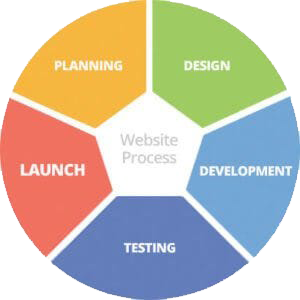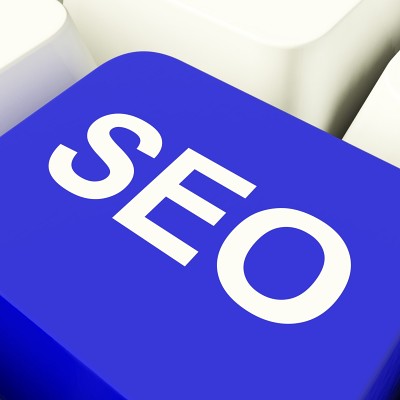
Hiring a web designer is a crucial step for any business looking to establish a strong online presence. A well-designed website can enhance your brand, attract customers, and drive growth. So, a few things you should know before hiring a web designer.
However, finding the right web designer requires careful consideration.
You need someone with the right expertise, a solid portfolio, and clear communication skills. Understanding their design process, fee structure, and additional services can help you make an informed decision.
Hiring a Website Designer? 12 Easy Questions You Need to Ask
Expertise
What’s your experience with websites in my industry?
When hiring a web designer, it’s crucial to ask about their experience within your specific industry. Different industries have unique needs and standards for online presence, and a web designer familiar with your field can better understand and meet those requirements.
Look for a designer who has worked with clients in your industry and can demonstrate a deep understanding of what makes a successful website in your sector. This experience allows them to anticipate challenges, incorporate industry best practices, and create a site that not only looks great but also performs well and meets your business goals.
By choosing a designer with relevant expertise, you can ensure that your website will resonate with your target audience and effectively support your business objectives.
Portfolio
Can I see examples of websites you’ve built?
A designer’s portfolio is a window into their style, creativity, and technical prowess. Request to see examples of websites they’ve previously built, paying attention to designs that resonate with your vision and goals.

A strong portfolio will showcase a range of projects, demonstrating versatility and the ability to tailor designs to different brands and industries.
Evaluate the aesthetics, functionality, and user experience of the sites. Look for clean, modern designs, intuitive navigation, and responsive layouts that work well on various devices.
The portfolio should reflect the designer’s capability to deliver high-quality, visually appealing, and user-friendly websites.
Reviewing their past work will give you confidence in their ability to bring your vision to life and provide insights into their design process and attention to detail.
Clients References
Can you provide references from past clients?
Client references are invaluable when assessing a web designer’s reliability and performance. Ask for references from past clients to gain insights into their working relationship, professionalism, and ability to meet deadlines and budgets. Speaking directly with former clients can provide a candid perspective on the designer’s strengths and areas for improvement.
Inquire about the client’s overall satisfaction, the designer’s responsiveness to feedback, and the success of the final product in achieving its goals. Positive testimonials and detailed feedback from clients can reinforce your confidence in the designer’s skills and professionalism.
References can also reveal the designer’s problem-solving abilities and how they handle unexpected challenges. Gathering this information will help you make an informed decision and choose a web designer who is not only skilled but also reliable and easy to work with.
Process
Can you walk me through your design process?

Understanding a web designer’s process is crucial for a smooth and successful project.
Typically, the design process starts with a discovery phase, where the designer gathers information about your business, goals, target audience, and preferences.
This is followed by the planning phase, which involves creating a site map and wireframes to outline the structure and layout of the website. Next, in the design phase, the designer develops visual mockups that reflect your brand identity and desired aesthetics.
Once the design is approved, the development phase begins, where the design is transformed into a functional website using coding and content management systems.
Throughout this process, the designer should conduct regular reviews and testing to ensure everything functions correctly.
Finally, the launch phase involves deploying the site to a live server, followed by ongoing maintenance and support. A clear, step-by-step process ensures that the project stays on track and meets your expectations.
Project Scope
What content (text, images) do I need to provide?
Providing the right content is essential for the success of your website. Typically, you will need to supply text, images, and other media that represent your brand and convey your message effectively.
This includes business information, product descriptions, service details, and any other relevant text content. High-quality images, such as logos, product photos, team pictures, and other visuals, are also crucial. If you have existing branding materials, such as style guides, color palettes, and fonts, these should be provided to ensure consistency.
It’s beneficial to discuss the content requirements with your designer early in the project. They can offer guidance on the type of content needed and how it should be formatted.
Some designers might offer content creation services or recommend professional copywriters and photographers if you need assistance. Providing well-prepared content helps streamline the design process and ensures your website effectively communicates your brand’s story.
Communication
How will I be involved in providing feedback and approvals?
Effective communication is key to a successful web design project. From the outset, establish how you will be involved in providing feedback and approvals. Regular check-ins, whether through email, phone calls, or video meetings, ensure you stay informed about the project’s progress.
Many designers use project management tools or collaboration platforms where you can review designs, leave comments, and track changes. During the initial stages, you will likely review wireframes and mockups to ensure the design aligns with your vision. Providing timely and specific feedback at each stage helps the designer make necessary adjustments and move forward confidently.
Establishing a clear approval process for each phase of the project, such as design, development, and final launch, ensures that your expectations are met before proceeding to the next step. This collaborative approach fosters a positive working relationship and ensures the final product aligns with your business goals.
Revisions
What happens if I need changes made after the website is built?
After your website is built, it’s common to need changes or updates. Most web designers offer post-launch support and revision services. It’s important to clarify this before starting the project.
Some designers include a set number of revisions in their initial fee, while others charge hourly for additional changes. Ensure you understand their policy on revisions, including response times and costs, to avoid any surprises.
Having a clear agreement on post-launch support will help you manage expectations and ensure your website remains up-to-date and functional.
Cost
What’s your hourly rate or project fee structure? Are there any hidden fees?
Understanding a web designer’s fee structure is essential for budgeting. Ask whether they charge an hourly rate or a flat project fee. Hourly rates can vary, typically ranging from $50 to $150 per hour, depending on experience and complexity.
Project fees offer a fixed cost, which might be more predictable. Additionally, inquire about any potential hidden fees, such as charges for extra revisions, premium plugins, or ongoing maintenance.
Clear communication about costs upfront helps avoid unexpected expenses and ensures you’re fully aware of what’s included in the pricing.
Technical Skills
Do you offer SEO optimization services?

SEO optimization is crucial for your website’s visibility and success. Many web designers offer SEO services as part of their package or as an add-on.
These services can include keyword research, on-page optimization, meta tags, and improving site speed.
Ask your designer if they provide SEO optimization and what specific strategies they use.
Having SEO integrated into the design process ensures your website is search-engine friendly from the start, helping you attract more visitors and improve your online presence.
If your designer doesn’t offer these services, consider hiring an SEO specialist.
Technical Skills
How will you ensure my website is mobile-friendly?
Ensuring a website is mobile-friendly is crucial. A competent web designer will use responsive design techniques, ensuring the site adapts seamlessly to different screen sizes and devices.
This involves using flexible grids, layouts, and images that adjust automatically. The designer will also test the site across various devices and browsers to ensure compatibility and optimal performance.
Additionally, they may use tools like Google’s Mobile-Friendly Test to verify the site’s usability on mobile devices. By prioritizing mobile responsiveness, the designer ensures your site provides a positive user experience, regardless of the device used to access it.
Timeline
What’s your estimated timeline for completing the project?
The estimated timeline for completing a web design project can vary based on the project’s complexity and scope. Typically, a basic website might take 4-6 weeks, while more complex sites can take 8-12 weeks or longer.
The timeline includes phases such as discovery, planning, design, development, testing, and launch. It’s essential to discuss and agree on a timeline with your web designer, including milestones and deadlines for each phase.
Clear communication and a detailed project plan help ensure the project stays on track and is completed within the agreed timeframe.
Additional Services
Do you offer any website hosting or website maintenance after launch?
Many web designers offer additional services such as website hosting and maintenance after launch. Hosting services ensure your website is accessible on the internet, while maintenance includes regular updates, backups, website security checks, and troubleshooting.
These services can be offered as part of a package or as separate ongoing support plans. It’s beneficial to inquire about these options, as having the same provider for design, hosting, and maintenance ensures seamless service and support.
This approach helps keep your website running smoothly and securely, allowing you to focus on your business.